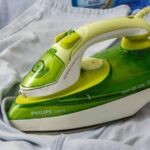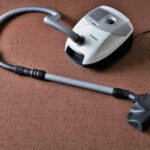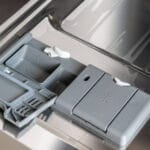Washing clothes and fabrics may not seem like a complicated task, and it isn’t. But if the difference between a fabric conditioner and a detergent kind of eludes you, it’s because there’s a little learning around washing clothes that you need to do.
There’s a whole range of fabric care products to learn about for anyone who wants to get smart at laundry work. And since you can’t learn EVERYTHING about washing clothes and fabrics in one sitting, this post focuses on fabric conditioners and detergents.
What is a Fabric Conditioner?
Also referred to as a fabric softener, a fabric conditioner is a product that’s engineered to make fabrics softer. This chemical is either added pre-wash cycle or added during the rinse cycle. Other forms of conditioners such as dryer sheets and dryer balls are used during the drying phase of the process.
Traditional fabric softeners rely on certain kinds of lubricants to cover the surface of the fabric. These lubes are essentially chemicals formulated to give the fibers an electric charge. Once the fibers become electrically charged, they stand straight up, giving the fabric being conditioned a fuzzier, softer feel.
While conditioners are generally good, make sure that the textile’s care label actually allows you to use them on the garment. Many conditioners have scents and other contents that make clothes a living “touchy” hell for folks with skin allergies.
And while these substances can make most natural-fiber clothes retain their color for longer, smell nicer, and feel softer, they can harm others. Again, always read the care instructions and act accordingly.
What Is a Fabric Conditioner Made Of?
The earliest fabric softeners were designed for the purpose of softening freshly dyed cotton. Manufacturers mixed water, oil, (such as tallow, olive, and corn) and soap to produce these cotton softeners.
Fast-forward to modern fabric conditioners, and you have a concoction that does way more than simply making stiff fabrics softer.
Today’s conditioners contain extra constituents such as dyes and scents. They may also have wrinkle-reduction and stain-protection ability. A fabric so conditioned smells great, doesn’t fade as fast, is easier to iron, doesn’t stain as easily, and sees less static charge.
A typical fabric conditioner works from the surface of the fabric, but things are changing. The most up-to-date conditioners work by seeping into the fibrous structure of the garment and doing their magic from there.
Conventional conditioners have been known to diminish the absorption capacity of the fabric, but these new fiber-penetrating conditioners are reversing all this.
What is a Detergent?

A detergent is a water-soluble substance with cleaning powers that you use to loosen and break down loads of dirt and stains. It’s like soap in many ways, but there’s one important difference between the two. The sulfonate part of a detergent doesn’t react with calcium and other ions in hard water to form scum the same way carboxylate in regular soap does.
For this reason, detergents are hands down the winner when it comes to taking care of clothes when you’re washing with moderately salty well water.
But detergents aren’t only used to make laundry cleansing agents. Besides this more common use, this compound with a long-chain alkyl group as part of its chemical structure also lends itself to the manufacture of biological reagents and fuel additives.
Without detergents in your car’s carburetor and fuel injector, these components would continually give off a horrible odor. And without detergents, lab-loving scientists wouldn’t be able to isolate and purify protein membranes of cells for research purposes.
What’s a Fabric Detergent Made Of?
Have you ever wondered what’s in your favorite detergent? Fabric detergents contain a bunch of substances that make them great at breaking down dirt and even stains. These substances include builders (about 50%), surfactants (about 15%), bleach (roughly 7%, and enzymes (about 2%). The rest of the constituents include dyes, corrosion inhibitors, foam regulators, fillers, formulation aids, brighteners, and soil anti-deposition agents.
Here is a breakdown of the main ingredients in fabric detergent which include surfactants, builders, bleach, enzymes, and brighteners
Surfactants give detergents much of their cleansing capability. Builders help soften the water (sorry, they won’t replace your water softening system), remove stains, and break down oily and greasy dirt. Like surfactants, builders boost the cleansing capacity of a detergent.
Then there’s enzymes whose job is to break down and loosen up the toughest of stains for eventual removal. As noted in a later section, detergents with enzymes are super effective at stain removal, but they’re not very gentle on the skin. If your skin reacts negatively to harsh chemicals, you want to use non-biological detergents.
Bleaches discolor stains to make them less visible or invisible. Who knew bleaches don’t actually lift stains. There are oxygen bleaches and chlorine bleaches. And it’s critical to read care labels to learn what bleach type the manufacturer recommends if they recommend bleaching at all. Finally, there’s fabric brighteners that brighten clothes, including whites.
Are there Natural Alternatives for Detergent?
The most common natural alternative for detergents is soapnuts. These are also known as soapberries and they are obtained from Himalayan Soapnut Trees. Unlike commercial detergents, Soapnuts are free from chemicals that can cause allergic reactions.
Is Fabric Conditioner the Same as Detergent?
The main difference between a detergent and a fabric conditioner is that a detergent functions as a cleansing agent for dirty clothes (once it’s been diluted in water) while a conditioner softens clothes while giving them a perfume-like scent. Both cleaning supplies are essential to the laundry process, but not all kinds of clothes can be conditioned.
Interesting fact: Due to the soap-making supplies shortage resulting from the Allied Blockade of Hitler’s Germany post-World War I, German scientists got creative and invented the first-ever synthetic detergent in 1917. In the United States, detergents made their first appearance in the 1930s while Europe waited until 1942 to see their version of this soap alternative. It looks like Napoleon Hill was right when he said that every adversity “carries with it the seed of an equal or greater benefit.”
Detergent vs. Soap: What’s the Difference?
That laundry detergent with a nice-sounding brand name you keep seeing in ads, isn’t it also soap? Isn’t soap and detergent one and the same thing? No, they’re not the same thing. There’s a difference between detergents and soaps.
The main difference between laundry detergent and laundry soap is that detergents are made using petroleum-based materials, some synthetic materials, and biograde materials such as enzymes while soap is made from mostly natural fats and oils. While soaps are biodegradable and eco-friendly, detergents aren’t biodegradable, and the production processes involved aren’t eco-friendly either.
While detergents may sound like something you shouldn’t be using, there’s one good reason many people use them for laundry work and dishwashing: Soaps aren’t great when it comes to washing clothes and fabrics in relatively hard water.
As explained elsewhere in this post, the carboxylates in soap react with ions such as calcium forming scum. And scum is insoluble, which makes washing a tad more difficult and less enjoyable especially if you’re hand-washing. Not to mention that this film-like coating may end up on your clothes and washer.
You can actually make your own soap at home. It’s not as complicated as you might imagine. And you’ll feel like a serious chemical engineer (though not a recognized one) once done with your little chemistry project. Watch the video in the link to learn the easy-to-follow homemade liquid detergent recipe.
Here’s a more digestible version of the differences between regular soap and detergents:
- Soaps are made using majorly natural oils and fats versus petroleum-based and synthetic raw materials for making detergents.
- Soap is biodegradable while detergent is largely not.
- Manufacturing soap involves more eco-friendly processes compared to detergent production. Mother Earth will love you more for using more soap and less detergent.
- Soaps aren’t ideal for washing clothes and dishes where the water is relatively hard. In such a situation, turn to a decent detergent.
4 Main Types of Detergents
Detergents are grouped into 4 broad classifications namely:
- Liquids
- Powders
- Tablets
- Pods
These classifications have little to do with what ingredients are in the detergent (or soap). Rather, the classification is based on the form in which these cleaning supplies are available. Let’s look each.
Powder Detergents
Powder detergents are typically the most affordable choice. They come packed in a cardboard or tin box. And the good thing is that you can fully recycle these containers.
Also, many powder-like cleansers contain oxygen bleach in their formula, an ingredient many liquid detergents don’t have.
One thing powder detergents do really well is brightening clothes. However, not all kinds of detergent dissolve completely in cold or cool water. And with others, a film-like residue remains after the wash cycle. Also, the powder-storing container may get leaky at some point due to wetness.
But you’ll have to deal with the not-so-neat process of measuring the quantities you need for each wash cycle. And while pre-treating stains on clothes is possible with these cleansers, they’re not as good as liquid detergents. It can get all messy as you pour out the powder.
Liquid Detergents
They come in plastic containers. And they’re easy to clean up in case of spillage. What’s more, the container is unlikely to leak .
If there’s one thing liquid detergents do well, it’s stain removal. Whether the stain is greasy, fatty, or whatever, this detergent type got you covered. Unlike their powder counterparts, these ones dissolve really well in the wash whether it’s a cool or a warm wash cycle.
Another thing to like about liquid detergents is that they’re available in appropriate formulations for colored, dark, and white clothes.
However, deciding how much of this kind of cleanser you need for a small, medium, or large wash can be tricky. Also, liquid options cost more compared to powdered forms. And who knows what to do with all the plastic that ends up in the world’s sanitary landfills?
Laundry Pods: The Expensive, Convenient, No-mess Option
Measuring powder and liquid detergents can be messy. And you have to do real math to determine the correct amount each load needs. And math is loads of fun for everyone, right?
Enter pods, and even though you’ll pay more, each pod represents a known unit of measurement. It gets better: there’s no mess to deal with whether you’re traveling or doing your laundry at home.
In terms of detergent concentration, nothing beats pods. Who knows just how much water that liquid detergent contains? With pods, you’re getting more of what you need and less of what you don’t.
They brighten clothes too while removing stains and making clothes smell really nice. Another attractive thing about pods is that they have an incredibly long shelf-life. And the best part? These little neat things have a biodegradable protective coating.
What’s not to like about pods? Turns out there’s a con or two. If your curious kid or playful pup ever gets access to your laundry pods, they might think they’re tasty treats!
Also, what happens when you have a load that’s only slightly bigger than one pod? You have to use an extra pod, wasting a decent portion of it. Similarly, if the load is too small for one pod, you still have to use an entire pod.
There’s one more thing: With pods, you won’t be able to pre-treat stains.
Laundry Tablets
Laundry tablets are similar to pods in that they come in pre-measured units. Also, they’re a no-mess choice and the traveler’s companion.
But that’s not all. Detergent manufacturers offer a bunch of laundry tablets that work well for folks with sensitive skin.
The downside to laundry tablets is that they may not be as easy to find as are pods, powders, or liquids. And like pods, tablets aren’t up for pre-treating stains.
Again, you can’t make adjustments to avoid wastage while handling a smaller load. And when washing a bigger load, you have to use an extra full tablet.
Below is a list of other types of detergents you may come across:
Eco-friendly detergents: Similar to laundry soap and made of mainly plant-based materials. Be sure to check the label to see how much plant-based ingredients are in the product versus synthetic materials. Not all eco-friendly detergents are 100% plant-based. Choose these if you have sensitive skin, kids, or allergies.
Detergents for delicates: For delicate fabrics such as wool, silk, and viscose rayon.
Biological and non-biological detergents: Biological detergents contain enzymes that help solve stubborn stains. These ones aren’t known for being too kind to sensitive skin. Small wonder laundry experts don’t recommend them for baby clothes.
As for non-biological detergents, they’re not as powerful as their biological counterparts. The upside to non-biological options is that they treat sensitive skin and baby clothes with greater kindness.
Color-safe detergents: These ones clean out dirt and stains while helping preserve the original color of the garment.
Hypoallergenic detergents: Allergen-free options for people with asthma and allergies according to ohsospotless.com.
Types of Soap
There are different types of soap named according to product purpose. There’s kitchen soap for dishwashing, laundry soap for washing clothes, and novelty soap in all kinds of kiddo-friendly shapes and designs.
Then there’s beauty soap with fragrance. This type works well with different skin types. Smaller-than-normal-size guest soap comes in all kinds of shapes for guest use.
Finally, there’s medicated soap with disinfecting powers, liquid soap, glycerin soap, and transparent soap. Learn more about different types of soaps here.
Fabric Conditioner vs Detergent: Wrapping Up
A fabric conditioner isn’t the same as a fabric detergent. Each of these two substances serves a different purpose. Laundry work often demands that you use them together.
Conditioners work on or in the fabric to brighten clothes, minimize staining, remove odors, prevent fading, and soften clothes. As for detergents, these are mainly for breaking down dirt and stains and loosening them up so they can be easily rinsed off.
Now, what’s next? It’s time to order the product you need for your laundry work and get busy.





